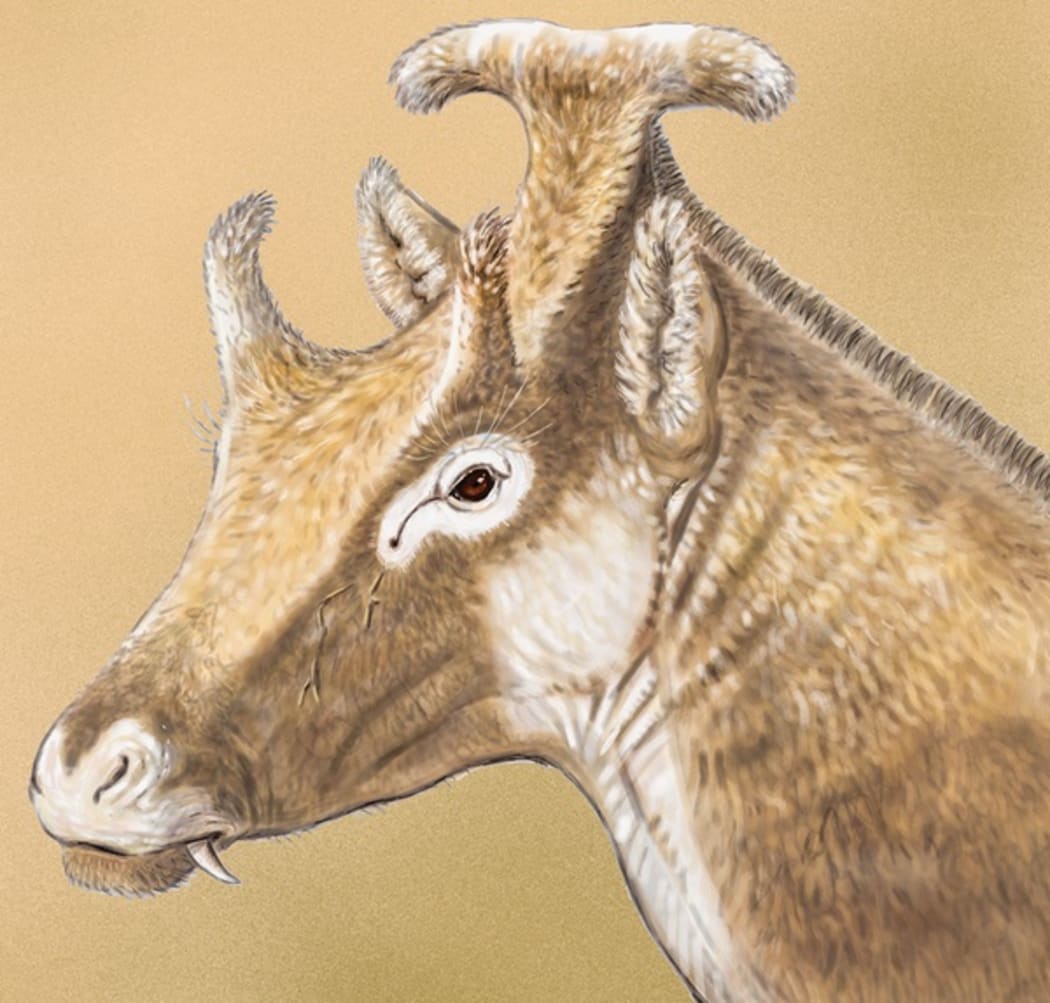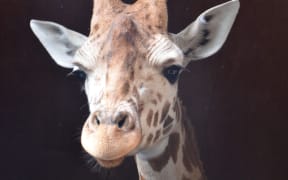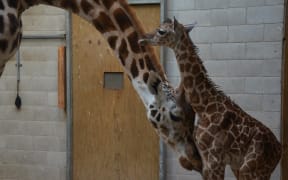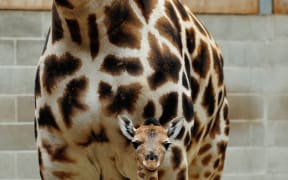Well-preserved fossils of the extinct three-horn ruminant Xenokeryx amidalae found in central Spain suggest it is a close relation to modern giraffes.

This extinct three-horn ruminant Xenokeryx amidalae has been found to be related to giraffes. Photo: PLoS One
A new investigation challenges the previously held view that this unusual looking creature is related to North American ancestors of deer.
Scientists say the new study will help us better understand the evolution of cranial features such as horns, as well as the evolution of land ecosystems.
Their work was reported in PLoS One.
For the last 40 million years, ruminants have represented a big proportion of the world's large herbivores.
Ruminants include cattle, sheep, goats, deer, giraffes, antelopes, camels, and other extinct species.
Palaeomerycids, now extinct, were strange-looking three-horned ruminants found in many areas, from Spain to China, some five to 23 million years ago, during what is termed the Miocene Period.
Dr Israel Sánchez and his collaborators from the Museo Nacional de Ciencias Naturales in Madrid, Spain, studied well-preserved remains of a new palaeomerycid - Xenokeryx amidalae.
The skull was in particularly good condition and it included teeth, as well as the three horns - one of which is T-shaped.

Photo: RNZ
This allowed the team to see that, despite apparent similarities, palaeomerycids are not related to a North American extinct relative of the deer - the dromomerycids.
As a consequence, Dr Sánchez and his collaborators re-draw the family tree of ruminants by placing palaeomerycids in the same group as the modern-day giraffe.
"Giraffes nowadays are characteristic of Africa. But in the Miocene there were giraffes both in Eurasia and in Africa. And the origin of giraffes is probably in Asia, in Pakistan," Dr Israel Sánchez explained.
"Establishing the place of palaeomerycids in the ruminant tree gives us insights into the evolutionary history of the large clade of pecoran ruminants that include giraffes (Giraffa and Okapia) as its only extant survivors, and shows us the amazing diversity of an ancient lineage that inhabited both Eurasia and Africa."
The study of these extremely well-preserved fossils also provided valuable insight into the evolution of anatomy features like horns.
Because ruminants were found across the world and were very sensitive to their habitats, their evolution holds clues to changes in land ecosystems throughout history.
"We didn't know where the palaeomerycids were placed in the phylogenetic tree of the ruminants. And now we know."
-BBC





